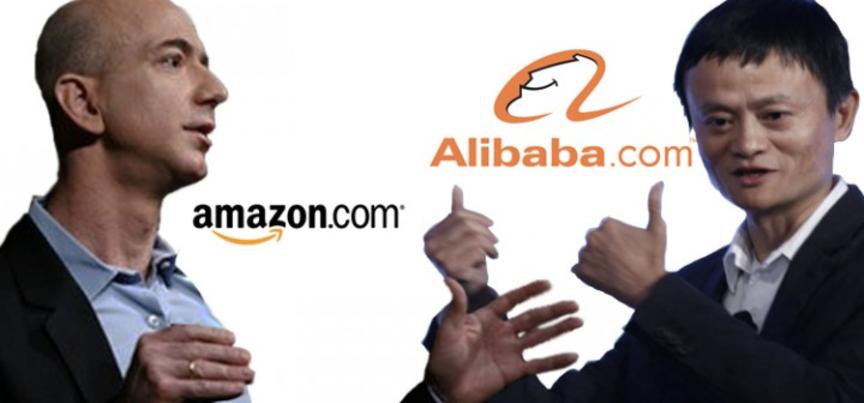Amazon is the world’s largest e-retailer by valuation, with a market cap well north of $360 billion, but Alibaba is the world’s largest e-tailer in terms of gross merchandise volume (the total value of goods sold), with nearly 3,255 billion Yuan in sales (about $488 billion) in the last twelve months. But that’s not all; they’re easily the most profitable retailer in the world. Why is this, and why is Amazon not as profitable as Alibaba?
e-Commerce is not one type of business
A lot of people tend to think of e-commerce companies as being very similar to each other. While that’s true in the sense that all their transactions are conducted online and the products then physically shipped, that’s the extent of their similarity. While some companies sell directly to consumers, others sell to other businesses. Some might have an international presence, for example, while others limit their scope to one country.
But possibly the biggest differentiator is the curated marketplace versus the buy-and-sell online retailer. It is this factor that makes Alibaba Group of China much more profitable than Amazon’s retail division.
Though much bigger in terms of revenues, Amazon is far behind Alibaba where profitability is concerned.
What is a marketplace model versus the seller’s model?
But what makes two companies that are so similar so vastly different when it comes to results? The answer to that question lies in the business model that both these companies employ. Amazon has always been a party to the sales of goods in its platforms, meaning the company primarily buys goods on its own and sells it to customers for a profit, while allowing other people to use their platform to do the same. By taking on the seller’s burden, Amazon is able to dictate the quality of goods it carries and also make sure that the spread is good enough from a customer’s point of view.
Alibaba does nothing of the sort. The company does not buy any goods at all. Alibaba operates a pure marketplace model in China, where any seller can create a profile, list their goods and sell it. Essentially, Alibaba works more like a real estate broker, helping buyers and sellers meet and get their transaction done while pocketing the broker’s commission. Amazon, in contrast, is a builder first and broker next.
How does Alibaba work?
By only being a middleman, Alibaba never has to worry about procurement, think about what to buy, what price to pay, how much margin it can get and how high or how low it can sell for. In fact, Alibaba does not even step into the shipping part of the business. Instead of taking complete ownership of shipping the goods, Alibaba acts more like a supervisor making sure the shipment moves from the origin to the right destination on time.
“We take a platform approach to shipping and delivery by working with third-party logistics service providers through a central logistics information system operated by Cainiao Logistics, our 48%-owned affiliate.” Alibaba Annual Report – 2015
Alibaba’s customers are given the choice of which shipper they want handling their order. After the order is processed, the chosen shipper gets the information and is then under the strict supervision of Cainiao Logistics’ tracking system during the pick-up-and-deliver process. This way Alibaba can keep a close eye on all shipments, while not needing to have its own expensive infrastructure to make deliveries.
But one of the biggest problems of any marketplace selling branded goods is counterfeit products. A flood of “mimicked” products made by generic manufacturers but carrying recognized brand labels have plagued Alibaba for the longest time. In fact, Amazon faces that same problem with its third-party sellers, although to a much lesser degree. It’s something I covered in an earlier article, linked below.
Beware Fake Products on Amazon.com, Third-Party Sellers Under Microscope
So, on the one hand, the marketplace model itself is much more profitable than the seller model, but it does come with its own set of problems.
The Biggest Profitability Drain for Amazon
Shipping is usually the most expensive component of e-commerce. That’s because parcels are delivered directly to the doorstep, and it is this “last-mile” of delivery that makes it expensive. Amazon has been fighting its shipping costs for a very long time, but they’ve only been profitable in the United States so far. And even that is only because shipping costs are somehow balanced out by the sheer volume of goods they ship each year.
As you know, Amazon offers free delivery on many of its products, and this further eats into their profits.
So that’s basically why Alibaba is 10X more profitable than Amazon even though they seem to be in the same business. Amazon’s annual revenues have already crossed $100 billion but the company counts less than 5% of that money as its operating income, while Alibaba has just crossed $15 billion in annual sales but made nearly ⅓ of that as operating income.
As you can see, both models have their advantages and disadvantages, but the marketplace model is clearly more profitable than the seller model.
For its part Amazon is trying to do everything possible to try and cut down on shipping costs. From delivery drones to focusing on selling to other businesses (a division called Amazon Business, which sells office supplies to other businesses), Amazon keeps looking for opportunities to cut its spending.
Even the recent leasing of Boeing 767 planes and the acquisition of a new fleet of delivery trucks are part of that cost-saving effort. By owning their own transportation, they effectively bring down the cost per delivered package. That’s led people to believe Amazon is trying to enter the logistics space and compete with giants like UPS and FedEx, but that’s not where Amazon is going. All they’re trying to do is handle as much volume as they can themselves so they can turn a profit at the end of the year.
That’s gradually been happening, and Amazon North America is finally showing consistent profitability, as you can see from their 5% operating margin. But they’ll never get to be as profitable as Alibaba simply because they’ve chosen a different e-commerce model on which to operate their business.
Thanks for reading our work! If you’re reading this on Apple News, please favorite the 1RedDrop channel (next to our logo) to add us to your news feed, or Like our page on Facebook. Please bookmark our site for more insightful articles on current and future technologies that are changing our lives.


